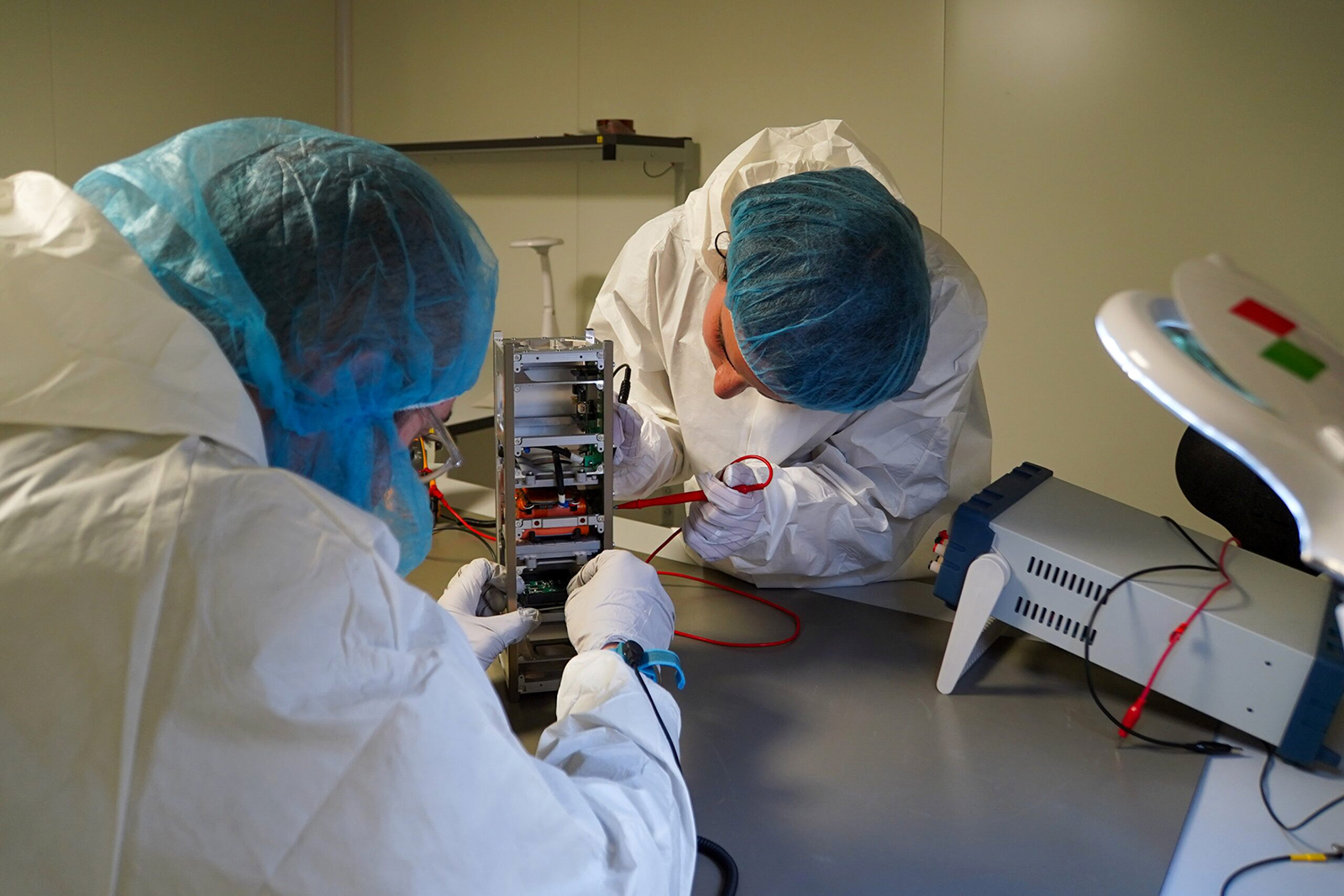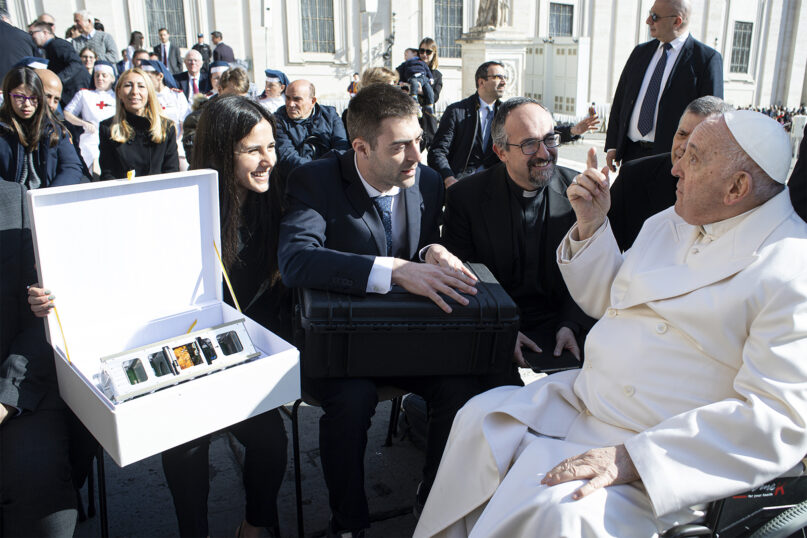VATICAN CITY (RNS) — Pope Francis’ message for unity and peace can now be heard from space, after a satellite containing a nanobook of his teachings was launched into the Earth’s orbit on Saturday (June 10), “to create new ways to show and promote ‘the seed of hope’,” according to a Vatican statement.
The satellite hitched a ride aboard Space X’s Falcon 9 rocket launching from the Vandenberg Space Force Base in California, after being blessed by Pope Francis on March 29 at his General Audience in St. Peter’s Square.
The Spei Satelles mission, the Latin words for Satellite of Hope, was inspired by this papacy’s most memorable moment during the pandemic, when Pope Francis stepped out into an empty St. Peter’s Square on a rainy evening in late March 2020 to issue a message of unity as the world began to grapple with the effects of the COVID-19 pandemic.
“If that evening Pope Francis, from St. Peter’s Square, used the colonnade as a symbol of embrace to all of humanity, with the voyage of this satellite we wish to prolong that embrace,” said Msgr. Lucio Adriàn Ruiz, the secretary of the Vatican communication department, during a press conference in March.
The highlights of that historic moment were written down in a book titled “Why Are You Afraid? Have You No Faith?” which was converted into a “nanotechnological version,” a silicon plate measuring 0.08 square inches by 0.008 inches wide, by Italy’s National Research Council.

An olive brach compared to the silicon plate nanobook, right, which is carried on the Spei Satelles. Courtesy photo
“For those of us who are used to seeing space as the privileged place from which to observe the world and communicate to it without borders, it was easy to imagine a quick, humble and effective solution to offer wings to the Holy Father’s message,” Giorgio Saccoccia, president of the Italian Space Agency, said in a statement.
The satellite, built by the Polytechnic University of Turin and operated by the Italian Space Agency, weighs less than 6 pounds. It contains the pope’s message on March 27, 2020, and the names of all those who collaborated and supported the project. During its orbit, the satellite will transmit small messages of hope by Catholic popes “to signify the continuity that the Church’s message has had through history.”
The logo of the mission pulls together the symbols of Christ, the Virgin Mary, the Holy Trinity and the pope orbiting around a stylized version of the Earth made with the Holy See’s initials. It was created by the students of the Salesian University Institute in Venice.
In 2022, the pope’s message was also memorialized in the Svalbard Seed Vault, a depository in the Arctic that contains more than 1 million seed samples from all over the world to ensure their survival. It was registered as “a seed of hope.”

Students at the Polytechnic University of Turin work on “Spei Satelles,” a small CubeSat satellite they built. The satellite carries a nanobook and will send signals back to Earth for ham radio operators to hear papal messages. Photo courtesy Vatican Media
The project was coordinated by the Vatican’s Dicastery of Communication with the help of other Catholic institutions. People could acquire a virtual “boarding pass” aboard the satellite by signing up on the Spei Satelles website and committing to making a gesture of mercy for peace and hope.
“We are all in the same storm,” Paolo Ruffini, head of the Vatican Dicastery of Communications, said at a press conference, describing modern struggles ranging from the pandemic to the conflict in Ukraine.
“We need to look beyond. We need to look up. We need to look from above. And we must look deep, deep within us. Because, as the pope said speaking to God, this is not a time for your judgment but for our judgment,” he added.





